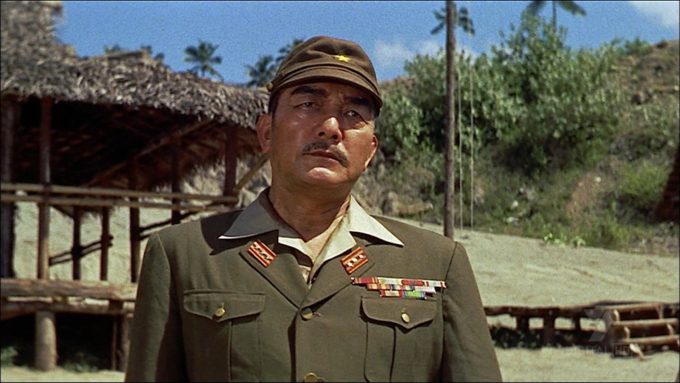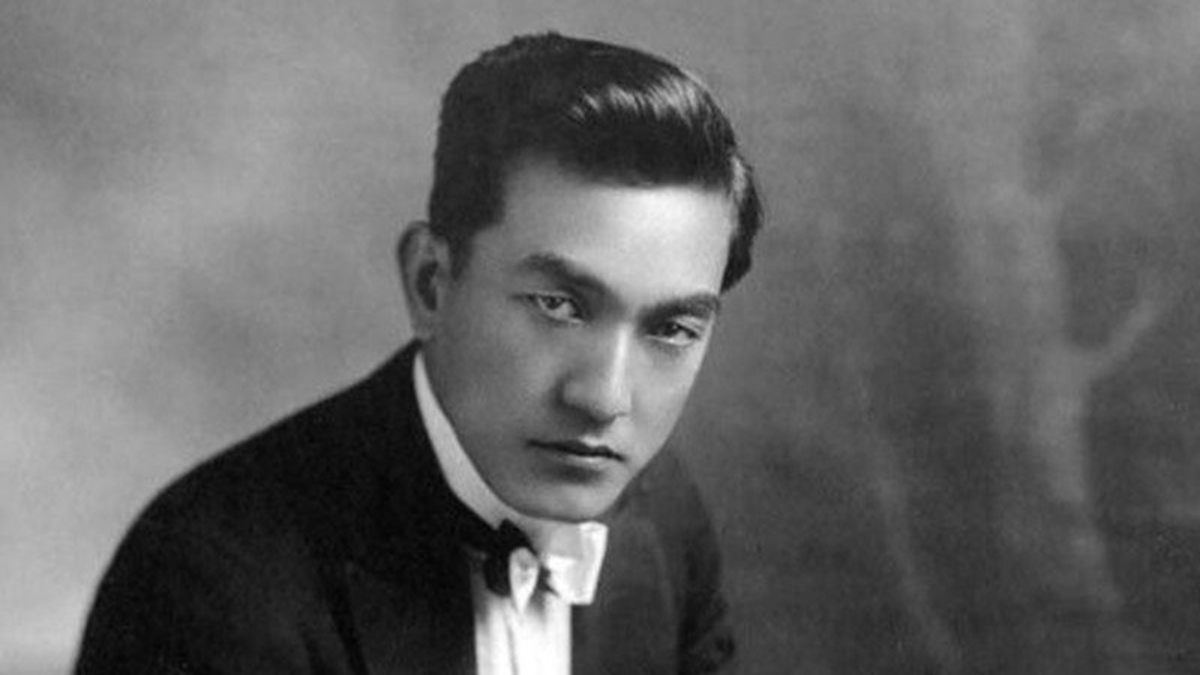Written By: Nathan Liu
In a 2015 interview with the Coalition of Asian Pacifics in Entertainment, actor Daniel Dae Kim described how he thought it was time for Asian performers to take leading roles. Specifically, he insisted that it was time for Asian American males to be seen as romantic leads. It’s a sentiment that I share. After all, Asian men have routinely been emasculated, humiliated and denigrated in American films and TV shows. Anyone remember Long Duk Dong from “16 Candles” (1984) or Hop Sing from “Bonanza” (1959-1973)?
But what if I told you that there already was an Asian actor who’d achieved success as a romantic lead? Not only that, what if I was to inform you that this same Asian actor was the first big screen sex symbol, the highest-paid performer of his day, and the first Asian person ever to be nominated for an acting Academy Award?
In the 1910s and 1920s, Japanese actor Sessue Hayakawa was one of the biggest stars of silent Hollywood. His fame was on par with that of Charlie Chaplin. Often cast as a forbidden lover or sexually dominant villain, like in his breakout role in “The Cheat“ (1915), Hayakawa had a huge fan base of mostly white women, and at his peak, was paid up to $2 million a year. For context, that’s equivalent to roughly $28 million today. He was so successful that, in 1918, he started his own movie studio, Haworth Pictures, which produced vehicles specifically for him. He had total control over the 23 films that Haworth made, producing, starring in, and contributing to the design, writing, editing, and directing of the movies. Very often, he would star opposite a white woman, most notably the serial actress Marin Sais, whom Hayakawa personally chose to be his leading lady. Unfortunately, due to anti-miscegenation laws at the time, Hayakawa very rarely, if ever, got to “get the girl.” This was so well known that in 1957, while interviewing Hayakawa, Joe Franklin quipped, “there were two things we were sure of in the silent movie era; the Indians never got the best of it, and Sessue Hayakawa never got the girl.” The only times Hayakawa did wind up with a romantic interest at the end was when he starred opposite his wife, Japanese actress Tsuru Aoki, in “The Dragon Painter” (1919).
Nevertheless, Hayakawa persevered, eventually making a successful transition to “talkies,” and achieving fame outside the United States. In 1930, for instance, he performed a one-act play, “Samurai,” for Great Britain’s King George V and Queen Mary. He also became immensely popular in France. According to the University of Oregon Professor Daisuke Miyao in his seminal work on the actor, “Sessue Hayakawa: Silent Cinema and Transnational Stardom,” he was “enthusiastically embraced” by the French. Likewise, Miyao notes how German audiences found him to be “sensational.” Hayakawa wound up making several films in both countries, such as the German Japanese co-production “The Daughter Of The Samurai” (1937) and the French drama “Yoshiwara” (1937). His output during World War II was scarce, seeing how he was fighting in the French Resistance, but that changed when he starred as the villain in Humphrey Bogart’s “Tokyo Joe” (1949). This was closely followed by “Three Came Home” (1950), and arguably his most famous role as Colonel Saito in David Lean’s “Bridge on The River Kwai” (1957). The story of a group of British prisoners of war being forced to build a bridge in Japanese-occupied Burma, the film was a smash hit, raking in $27 million against a $2.8 million budget. It also won seven Academy Awards, including Best Picture, and earned Hayakawa an Oscar nomination for Best Supporting Actor, making him the first Asian performer ever to be nominated. After this film, Hayakawa largely retired from acting, occasionally appearing in supporting roles like in Disney’s “Swiss Family Robinson” (1960) and the animation “The Daydreamer” (1966). Finally, on November 23, 1973, Hayakawa died in Tokyo at the age of 87.

Now, given his immense popularity, particularly with white women, and his surprising lack of notoriety after his death, it’s worth asking two questions. One, how can we account for an Asian actor’s surprising stardom in early Hollywood when, even now, Asian performers are struggling to get recognition? And two, why is Hayakawa, despite being such a trailblazer and being just as popular as people like Charlie Chaplin during his lifetime, largely forgotten? The answer to the first question might be as simple as good timing. Hayakawa came onto the scene when the Japanese were viewed favorably in American society. Japan was America’s ally during World War I, so Americans saw the Japanese as friends. On top of that, as Miyao points out in his book, Japanese culture was “in vogue” during the early 1900s. Japan had just opened up to the West a few decades prior, so Americans were eager to learn about “the land of the rising sun” and saw the Japanese as “exotic” and “interesting.” This was as opposed to other Asian groups, like the Chinese, whom the US government had already deemed as “not white” and therefore ineligible for basic rights, such as citizenship, owning land, and voting. The Japanese would eventually be denied such rights as well in the 1922 Supreme Court case Ozawa V. United States. But that wouldn’t happen until seven years after Hayakawa became a star.
So for seven years, Hayakawa was able to exploit his favorable position as an “exotic,” “interesting” foreigner in Hollywood. His exoticism also played a part in his popularity with women. The early 20th century was a time of sexual repression, and in most of Hayakawa’s early films, he played a sexually dominant villain. In “The Cheat” (1915), for instance, he appears as a wealthy Japanese businessman, who lends a desperate white woman money. When she fails to pay him back, he brands her as his property. Modern audiences may look at this scene with horror and disgust, but in 1915, women were literally swooning in the aisles. As Stephen Gong, executive director of the San Francisco Center for Asian American Media, points out, “The idea of the rape fantasy, forbidden fruit, all those taboos of race and sex — it made him a movie star. And his most rabid fan base was white women.” Which again begs the question, why, if he was so popular, is he virtually forgotten today? The answer may actually have to do with us, Asian American viewers.
Since so many of Hayakawa’s roles were as villains, and the films he was in often showcased ugly stereotypes, many Asian American and Japanese organizations protested. In 1915, the LA-based Japanese newspaper “Rafu Shimpo” urged all its readers to boycott Hayakawa’s film “The Cheat.” And at several points throughout his career, many other Asian American outlets would decry him as a “traitor” to the community. It’s the same reason Anna May Wong, Mantan Moreland and so many other early movie stars of color are never spoken about today; they’re seen as embarrassments. Our line of thinking goes something along the lines of “these actors played roles that perpetuated racist stereotypes, so they should be forgotten.” Never mind the fact that, due to racist laws and production codes, these roles were all that were available, and that the actors in question often hated playing them. According to Miyao, Hayakawa actually apologized for “The Cheat” when he read the “Rafu Shimpo” article, and in 1949, he lamented “My one ambition is to play a hero.” That was precisely why he founded Haworth Pictures in 1918, to produce films that would present him and other Japanese actors in a more favorable light. And he did. “The Dragon Painter” is a genuinely charming and enchanting love story. It’s actually quite inspiring to know that, all the way back in 1919, an American movie starring two Asian actors was a big critical and commercial success. And while he is playing a villain in “Bridge On The River Kwai,” the film is still a classic, Hayakawa is still fantastic, and the character of Colonel Saito is portrayed with more grace and honor than many Asian characters written afterwards. Again, need I remind you of Long Duk Dong?
If there’s anything to be learned from Hayakawa’s legacy, it’s that we should demand better roles for Asian actors. We should strive to create positive and nuanced images on the screen. But we should not forget those who came before us. We should not shame, decry or denigrate those performers who took whatever roles they could, even if they were stereotypical, and who, through their success, paved the way for those that followed. Every Asian actor hoping to become a romantic lead should honor the man who made it possible a century ago: Sessue Hayakawa, America’s forgotten sex symbol.

